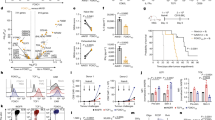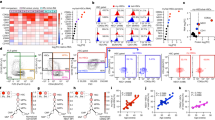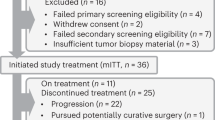Abstract
Transplantation of allogeneic cells as well as of genetically corrected autologous cells are potent approaches to restore cellular functions in patients suffering from genetic diseases. The recipient’s immune responses against non-self-antigens may compromise the survival of the grafted cells. Recipients of the graft may therefore require lifelong treatment with immunosuppressive drugs. An alternative approach to reduce graft rejection could involve the use of immune-evasion molecules. Expression of such molecules in cells of the graft may subvert recognition by the host’s immune system. Viruses in particular are masters of exploitation and modulation of their hosts immune response. The Herpesviridae family provides a proof of concept for this as these viruses are capable to establish latency and a lifelong persistence in the infected hosts. While several viral proteins involved in immune evasion have been characterized, the Herpesviridae also encode a multitude of viral microRNA (miRNAs). Several of these miRNAs have been demonstrated to reduce the sensitivity of the infected cells to the destructive action of the host’s immune cells. In this review, the miRNAs of some common herpesviruses that are associated with immune modulation will be discussed with a focus on their potential use in strategies aiming at generating non-immunogenic cells for transplantation.
This is a preview of subscription content, access via your institution
Access options
Subscribe to this journal
Receive 12 print issues and online access
$259.00 per year
only $21.58 per issue
Buy this article
- Purchase on Springer Link
- Instant access to full article PDF
Prices may be subject to local taxes which are calculated during checkout


Similar content being viewed by others
References
Mehra NK, Baranwal AK . Clinical and immunological relevance of antibodies in solid organ transplantation. Int J Immunogenet 2016; 43: 351–368.
Morath C, Opelz G, Zeier M, Süsal C . Kidney transplantation for high-risk sensitized patients the ‘heidelberg algorithm’. Transplant Proc 2011; 43: 801–804.
Süsal C, Opelz G . Current role of human leukocyte antigen matching in kidney transplantation. Curr Opin Organ Transplant 2013; 18: 438–444.
Dobbels F, Hames A, Aujoulat I, Heaton N, Samyn M . Should we retransplant a patient who is non-adherent? A literature review and critical reflection. Pediatr Transplant 2012; 16: 4–11.
Ingulli E . Mechanism of cellular rejection in transplantation. Pediatr Nephrol 2010; 25: 61–74.
Joudeh A, Saliba KA, Topping Ka, Sis B . Pathologic basis of antibody-mediated organ transplant rejection: from pathogenesis to diagnosis. Curr Opin Organ Transplant 2013; 18: 478–485.
Zaldumbide A, Alkemade G, Carlotti F, Nikolic T, Abreu JR, Engelse Ma et al. Genetically engineered human islets protected from CD8-mediated autoimmune destruction in vivo. Mol Ther 2013; 21: 1592–1601.
de la Garza-Rodea AS, Verweij MC, Boersma H, van der Velde-van Dijke I, de Vries AAF, Hoeben RC et al. Exploitation of herpesvirus immune evasion strategies to modify the immunogenicity of human mesenchymal stem cell transplants. PLoS One 2011; 6: e14493.
Virgin HW . The virome in mammalian physiology and disease. Cell 2014; 157: 142–150.
Grinde B . Herpesviruses: latency and reactivation - viral strategies and host response. J Oral Microbiol 2013; 5: 1–9.
Barton ES, White DW, Virgin HW . Herpesvirus latency and symbiotic protection from bacterial infection. Viral Immunol 2009; 22: 3–4.
White DW, Keppel CR, Schneider SE, Reese TA, Coder J, Payton JE et al. Latent herpesvirus infection arms NK cells. Blood 2010; 115: 4377–4383.
Feng P, Moses A, Früh K . Evasion of adaptive and innate immune response mechanisms by γ-herpesviruses. Curr Opin Virol 2015; 33: 395–401.
Hislop AD, Ressing ME, van Leeuwen D, Pudney Va, Horst D, Koppers-Lalic D et al. A CD8+ T cell immune evasion protein specific to Epstein-Barr virus and its close relatives in Old World primates. J Exp Med 2007; 204: 1863–1873.
Gram AM, Oosenbrug T, Lindenbergh MFS, Büll C, Comvalius A, Dickson KJI et al. The Epstein-Barr virus glycoprotein gp150 forms an immune-evasive glycan shield at the surface of infected cells. PLoS Pathog 2016; 12: e1005550.
Jost S, Altfeld M . Control of human viral infections by natural killer cells. Annu Rev Immunol 2013; 31: 163–194.
Bartel DP . MicroRNA target recognition and regulatory functions. Cell 2009; 136: 215–233.
Flór TB, Blom B . Pathogens use and abuse microRNAs to deceive the immune system. Int J Mol Sci 2016; 17: 538.
Piedade D, Azevedo-Pereira JM . The role of microRNAs in the pathogenesis of herpesvirus infection. Viruses 2016; 8: 156.
Boss IW, Plaisance KB, Renne R . Role of virally-encoded microRNAs in herpesvirus biology. Trends Microbiol 2010; 17: 544–553.
Yang H-J, Huang T-J, Yang C-F, Peng L-XL-X, Liu R-Y, Yang G-D et al. Comprehensive profiling of Epstein-Barr virus-encoded miRNA species associated with specific latency types in tumor cells. Virol J 2013; 10: 314.
Riley KJ, Rabinowitz GS, Yario TA, Luna JM, Darnell RB, Steitz JA . EBV and human microRNAs co-target oncogenic and apoptotic viral and human genes during latency. EMBO J 2012; 31: 2207–2221.
Tagawa T, Albanese M, Bouvet M, Moosman A, Mautner J, Heissmeyer V et al. Epstein-Barr viral miRNAs inhibit antiviral CD4+T cell responses targeting IL-12 and antigen presentation. J Exp Med 2016; 10: 2065–2080.
Nachmani D, Stern-Ginossar N, Sarid R, Mandelboim O . Diverse herpesvirus microRNAs target the stress-induced immune ligand MICB to escape recognition by natural killer cells. Cell Host Microbe 2009; 5: 376–385.
Ambrosio MR, Navari M, Di Lisio L, Leon EA, Onnis A, Gazaneo S et al. The Epstein Barr-encoded BART-6-3p microRNA affects regulation of cell growth and immuno response in Burkitt lymphoma. Infect Agent Cancer 2014; 9: 12.
Vereide DT, Seto E, Chiu Y-F, Hayes M, Tagawa T, Grundhoff A et al. Epstein-Barr virus maintains lymphomas via its miRNAs. Oncogene 2014; 33: 1258–1264.
Ross N, Gandhi MK, Nourse JP . The Epstein-Barr virus microRNA BART11-5p targets the early B-cell transcription factor EBF1. Am J Blood Res 2013; 3: 210–224.
Jung Y-J, Choi H, Kim H, Lee SK . MicroRNA miR-BART20-5p stabilizes Epstein-Barr virus latency by directly targeting BZLF1 and BRLF1. J Virol 2014; 88: 9027–9037.
Haneklaus M, Gerlic M, Kurowska-Stolarska M, Rainey A-A, Pich D, McInnes IB et al. Cutting edge: miR-223 and EBV miR-BART15 regulate the NLRP3 inflammasome and IL-1β production. J Immunol 2012; 189: 3795–3799.
Xia T, Hara AO, Araujo I, Barreto J, Carvalho E, Bahia J et al. EBV microRNAs in primary lymphomas and targeting of CXCL-11 by ebv-mir-BHRF1-3. Cancer Res 2008; 68: 1436–1442.
Hooykaas MJG, Kruse E, EJHJ Wiertz, Lebbink RJ . Comprehensive profiling of functional Epstein-Barr virus miRNA expression in human cell lines. BMC Genomics 2016; 17: 644.
Li Z, Chen X, Li L, Liu S, Yang L, Ma X et al. EBV encoded miR-BHRF1-1 potentiates viral lytic replication by downregulating host p53 in nasopharyngeal carcinoma. Int J Biochem Cell Biol 2012; 44: 275–279.
Landais I, Pelton C, Streblow D, DeFilippis V, McWeeney S, Nelson JA . Human cytomegalovirus miR-UL112-3p Targets TLR2 and Modulates the TLR2/IRAK1/NFκB signaling pathway. PLoS Pathog 2015; 11: 1–21.
Lau B, Poole E, Krishna B, Sellart I, Wills MR, Murphy E et al. The expression of human cytomegalovirus microRNA MiR-UL148D during latent infection in primary myeloid cells inhibits activin A-triggered secretion of IL-6. Sci Rep 2016; 6: 31205.
Meshesha MK, Bentwich Z, Solomon SA, Avni YS . In vivo expression of human cytomegalovirus (HCMV) microRNAs during latency. Gene 2016; 575: 101–107.
Stern-Ginossar N, Elefant N, Zimmermann A, Wolf DG, Saleh N, Biton M et al. Host immune system gene targeting by a viral miRNA. Science 2007; 317: 376–381.
Huang Y, Qi Y, Ma Y, He R, Ji Y, Sun Z et al. The expression of interleukin-32 is activated by human cytomegalovirus infection and down regulated by hcmv-miR-UL112-1. Virol J 2013; 10: 51.
Murphy E, Vanícek J, Robins H, Shenk T, Levine AJ . Suppression of immediate-early viral gene expression by herpesvirus-coded microRNAs: implications for latency. Proc Natl Acad Sci USA 2008; 105: 5453–5458.
Knoblach T, Grandel B, Seiler J, Nevels M, Paulus C . Human cytomegalovirus IE1 protein elicits a type II interferon-like host cell response that depends on activated STAT1 but not interferon-γ. PLoS Pathog 2011; 7: e1002016.
Pegtel DM, Cosmopoulos K, Thorley-Lawson DA, Van Eijndhoven MAJ, Hopmans ES, Lindenberg JL et al. Functional delivery of viral miRNAs via exosomes. Proc Natl Acad Sci USA 2010; 107: 6328–6333.
Kim Y, Lee S, Kim S, Kim D, Ahn JH, Ahn K . Human cytomegalovirus clinical strain-specific microRNA miR-UL148D targets the human chemokine RANTES during infection. PLoS Pathog 2012; 8: e1002577.
Kim S, Lee S, Shin J, Kim Y, Evnouchidou I, Kim D et al. Human cytomegalovirus miRNA-US4-1 inhibits CD 8 Tcell response by targeting the aminopeptidase ERAP1. Nat Immunol 2012; 12: 984–991.
Esteso G, Luzón E, Sarmiento E, Gómez-Caro R, Steinle A, Murphy G et al. Altered microRNA expression after infection with human cytomegalovirus leads to TIMP3 downregulation and increased shedding of metalloprotease substrates, including MICA. J Immunol 2014; 193: 1344–1352.
Meshesha MK, Veksler-Lublinsky I, Isakov O, Reichenstein I, Shomron N, Kedem K et al. The microRNA transcriptome of human cytomegalovirus (HCMV). Open Virol J 2012; 6: 38–48.
Pavelin J, Reynolds N, Chiweshe S, Wu G, Tiribassi R, Grey F . Systematic microRNA analysis identifies ATP6V0C as an essential host factor for human cytomegalovirus replication. PLoS Pathog 2013; 9: 1–13.
Shen ZZ, Pan X, Miao LF, Ye HQ, Chavanas S, Davrinche C et al. Comprehensive analysis of human cytomegalovirus microRNA expression during lytic and quiescent infection. PLoS One 2014; 9: 1–11.
Du T, Zhou G, Roizman B . HSV-1 gene expression from reactivated ganglia is disordered and concurrent with suppression of latency-associated transcript and miRNAs. Proc Natl Acad Sci USA 2011; 108: 18820–18824.
Flores O, Nakayama S, Whisnant AW, Javanbakht H, Cullen BR, Bloom DC . Mutational inactivation of herpes simplex virus 1 microRNAs identifies viral mRNA targets and reveals phenotypic effects in culture. J Virol 2013; 87: 6589–6603.
Duan F, Liao J, Huang Q, Nie Y, Wu K . HSV-1 miR-H6 inhibits HSV-1 replication and IL-6 expression in human corneal epithelial cells in vitro. Clin Dev Immunol 2012; 8: e73994.
Jurak I, Silverstein LB, Sharma M, Coen DM . Herpes simplex virus is equipped with RNA- and protein-based mechanisms to repress expression of ATRX, an effector of intrinsic immunity. J Virol 2012; 86: 10093–10102.
Enk J, Levi A, Weisblum Y, Yamin R, Charpak-Amikam Y, Wolf DG et al. HSV1 microRNA modulation of GPI anchoring and downstream immune evasion. Cell Rep 2016; 17: 949–956.
Held K, Junker A, Dornmair K, Meinl E, Sinicina I, Brandt T et al. Expression of herpes simplex virus 1-encoded microRNAs in human trigeminal ganglia and their relation to local T-cell infiltrates. J Virol 2011; 85: 9680–9685.
Du T, Han Z, Zhou G, Roizman B . Patterns of accumulation of miRNAs encoded by herpes simplex virus during productive infection, latency, and on reactivation. Proc Natl Acad Sci USA 2015; 112: E49–E55.
Viollet C, Davis DA, Reczko M, Ziegelbauer JM, Pezzella F, Ragoussis J et al. Next-generation sequencing analysis reveals differential expression profiles of miRNA-mRNA target pairs in KSHV-infected cells. PLoS One 2015; 10: 1–23.
Moody R, Zhu Y, Huang Y, Cui X, Jones T, Bedolla R et al. KSHV microRNAs mediate cellular transformation and tumorigenesis by redundantly targeting cell growth and survival pathways. PLoS Pathog 2013; 9: 1–20.
Abend JR, Ramalingam D, Kieffer-Kwon P, Uldrick TS, Yarchoan R, Ziegelbauer JM . Kaposi’s sarcoma-associated herpesvirus microRNAs target IRAK1 and MYD88, two components of the Toll-like receptor/interleukin-1R signaling cascade, to reduce inflammatory-cytokine expression. J Virol 2012; 86: 11663–11674.
Boss IW, Nadeau PE, Abbott JR, Yang Y, Mergia A, Renne R . A Kaposi’s sarcoma-associated herpesvirus-encoded ortholog of microRNA miR-155 induces human splenic B-cell expansion in NOD/LtSz-scid IL2Rγnull mice. J Virol 2011; 85: 9877–9886.
Qin Z, Kearney P, Plaisance K, Parsons CH . Pivotal advance: Kaposi’s sarcoma-associated herpesvirus (KSHV)-encoded microRNA specifically induce IL-6 and IL-10 secretion by macrophages and monocytes. J Leukoc Biol 2009; 86: 1–10.
Bai Z, Huang Y, Li W, Zhu Y, Jung JU, Lu C et al. Genomewide mapping and screening of Kaposi’s sarcoma-associated herpesvirus (KSHV) 3’ untranslated regions identify bicistronic and polycistronic viral transcripts as frequent targets of KSHV microRNAs. J Virol 2014; 88: 377–392.
Abend JR, Uldrick T, Ziegelbauer JM . Regulation of tumor necrosis factor-like weak inducer of apoptosis receptor protein (TWEAKR) expression by Kaposi’s sarcoma-associated herpesvirus microRNA prevents TWEAK-induced apoptosis and inflammatory cytokine expression. J Virol 2010; 84: 12139–12151.
Raulet DH . Roles of the NKG2D immunoreceptor and its ligands. Nat Rev Immunol 2003; 3: 781–790.
Hunter Ca, Jones Sa . IL-6 as a keystone cytokine in health and disease. Nat Immunol 2015; 16: 448–457.
Schuren ABC, Costa AI, Wiertz EJHJ . Recent advances in viral evasion of the MHC Class I processing pathway. Curr Opin Immunol 2016; 40: 43–50.
Tanaka T, Kishimoto T . Targeting interleukin-6: all the way to treat autoimmune and inflammatory diseases. Int J Biol Sci 2012; 8: 1227–1236.
Forte E, Raja AN, Shamulailatpam P, Manzano M, Schipma MJ, Casey JL et al. MicroRNA-mediated transformation by the Kaposi’s sarcoma-associated herpesvirus Kaposin locus. J Virol 2015; 89: 2333–2341.
Dittmer DP, Damania B, Sin S-H . Animal models of tumorigenic herpesviruses – an update. Curr Opin Virol 2015; 33: 395–401.
Author information
Authors and Affiliations
Corresponding author
Ethics declarations
Competing interests
The authors declare no conflict of interest.
Rights and permissions
About this article
Cite this article
Bots, S., Hoeben, R. Herpesvirus microRNAs for use in gene therapy immune-evasion strategies. Gene Ther 24, 385–391 (2017). https://doi.org/10.1038/gt.2017.37
Received:
Revised:
Accepted:
Published:
Issue Date:
DOI: https://doi.org/10.1038/gt.2017.37



